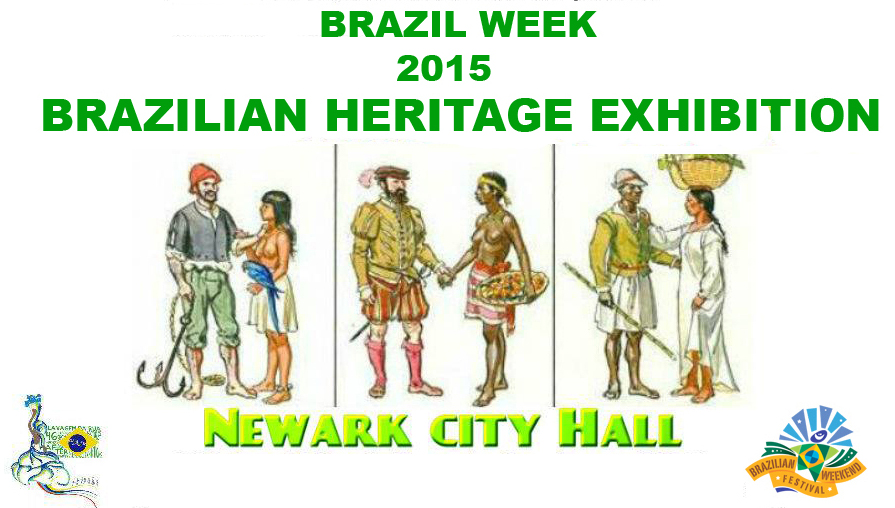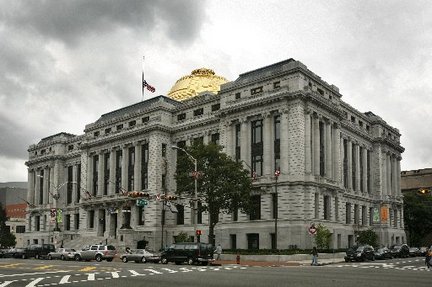NEWARK, N.J. – August 22, 2013 – The City of Newark, South Ward Council Member Ras Baraka, Newark Public Art Program Director Damon Rich, Program Manager Perris Straughter, Clinton Hill Community & Early Childhood Center Executive Director Cheryl D. Bush, lead artist Gladys Barker Grauer, arts administrator City Without Walls, and others will dedicate the Newark Public Art Program’s 24th large-scale outdoor painting, titled A Tribute to Newark Jazz Clubs, on Friday, August 23, from 4 to 7 p.m., at David L. Warner Playground at 390 Hawthorne Avenue. Light refreshments and entertainment will be provided.
A Tribute to Newark Jazz Clubs is the 24th large-scale city mural that has been completed since Mayor Cory A. Booker launched the Newark Public Art Program (NPAP) in 2009 as a part of the Newark Planning Office. Newark Murals tell Newark’s stories, celebrating and commemorating under-recognized people, places, and events. For each mural project, NPAP leads a collaboration of a community-based organization, artists and researchers, and young people to design and produce a large-scale outdoor painting. Previous murals may be viewed at www.thisisnewark.wordpress.com.
“We are proud to unveil our 24th large-scale mural since launching the Newark Public Art Program. In four years, we have unveiled two dozen murals to manifest the excellence of our artists, the strength of our neighborhoods and people, and the glories of Newark’s history. This mural honors our rich and continuing heritage as a center for jazz music. I congratulate everyone who helped make this beautiful mural a reality,” said Mayor Booker.
A Tribute to Newark Jazz Clubs celebrates the city’s history as a hotspot of jazz composition and performance, featuring a lively scene of playing, dancing, and listening. The painting includes the names of 22 legendary Newark jazz clubs including Caravan, the Key Club, Sparkey J’s, and Lloyd’s Manor. It was designed and produced in collaboration by the Newark Public Art Program; community partner and wall-owner the Clinton Hill Community & Early Childhood Center; lead artist Gladys Barker Grauer; supporting artist Melanie Stokes; additional artists and NewarkWORKS students Yasmine DeJesus, Malik Hardaway, Onnie Strother, Nicole Thompson, Lee Johnson, Larry Hilton, Cheryll Fowler, Kaela Berdecia; and arts administrator City Without Walls.
“We envision a city where the physical environment reflects the bold aspirations and deep history of Newark and its people,” said Mr. Rich. “A mural is not just a work of art, but the result of real collaboration among artists, youth, community-based organizations, and residents. That’s how each of these murals tells the story: this is Newark.”
“Newark Jazz Clubs were the pulse of the City’s entertainment from the late 1920s to the 1950s,” said Ms. Grauer. “It was a stop-over for gigs between New York City and Philadelphia for many great jazz entertainers. During the Depression, the clubs were a good business venture, a source of jobs and launched many careers for local entertainers of color. In the mural, the clubs are represented symbolically because so many of the original structures are gone. I attempted to give the viewer a glimpse of the jazz era fashion showing the zoot suit and the conked hair. Of course, ‘Sassy’ Sarah Vaughn takes over the center. The legacy of the jazz clubs lives today on Saturday nights in Baraka's Blues People, Barbara Kukla’s Swing City and WBGO's 24/7 365 Jazz.”
The Newark Public Art Program is an initiative of the City of Newark Division of Planning and the Newark Urban Enterprise Zone to create works of art and design that manifest the spirit and pride of Newark in its public spaces. It aims to bring public art and design into each of Newark’s neighborhoods, cultivating civic and community pride, bringing unexpected visual pleasure to the urban landscape, engaging residents and other stakeholders, and connecting Newark’s young people to community-based artists. To learn more, visit http://www.thisisnewark.wordpress.com
Gladys Barker Grauer (born in Cincinnati, Ohio in1923), is an artist, teacher, and activist. Prior to completing high school she and her family moved to the Chicago. After completing high school Ms. Grauer attended the Art Institute of Chicago. She then moved to New York and worked as a freelance artist, became involved in civil rights and political movements, and met and married Solomon Grauer. They moved to Newark’s Clinton Hill section in 1951. While raising a family Gladys and Solomon continued their community involvement. They were among the founding members of the Clinton Hill Neighborhood Council.
In 1972 Gladys Grauer opened the Aard Studio Gallery on Bergen Street in Newark. She helped launch the careers and critical evaluation of numerous black and brown artists. Her gallery addressed the needs of artists of color by providing a forum for mutual support, professional networking, exhibition and selling of their art. Gladys Grauer was one of the founding members of Black Woman In Visual Perspective, an organization of African-American women artists. She served on the Boards of Theater of Universal Images; City Without Walls; and the Newark Arts Council, and mentored young art students through Art Reach.
Gladys’ artwork has been exhibited locally, nationally and internationally: from The Newark Museum to Dakar, Senegal. Her works are included in the permanent collections of the Newark, Montclair, Morris, and the New Jersey State Museums. She has completed three murals in Newark. Gladys continues to inspire the next generation of artists, and to creatively express through visual discord, her social, political and personal views.
`









